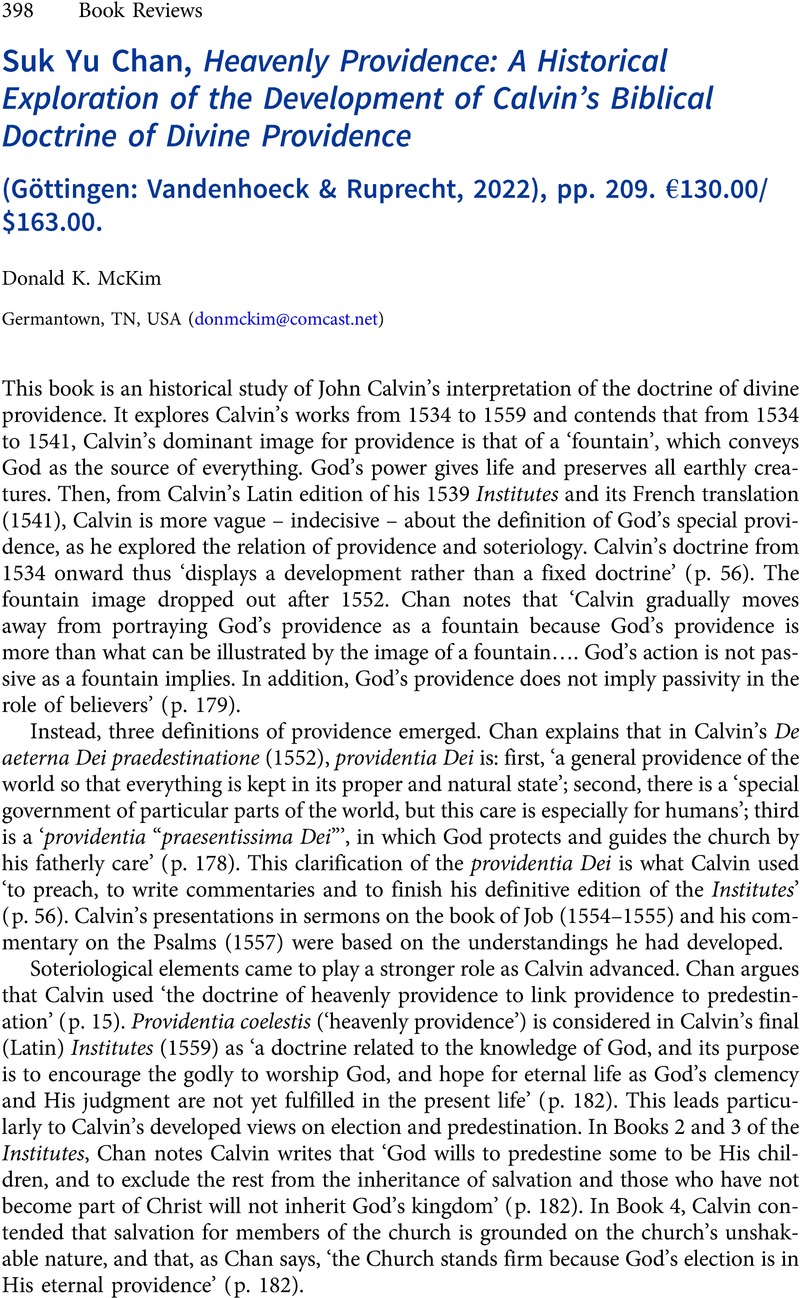No CrossRef data available.
Article contents
Suk Yu Chan, Heavenly Providence: A Historical Exploration of the Development of Calvin's Biblical Doctrine of Divine Providence (Göttingen: Vandenhoeck & Ruprecht, 2022), pp. 209. €130.00/$163.00.
Review products
Suk Yu Chan, Heavenly Providence: A Historical Exploration of the Development of Calvin's Biblical Doctrine of Divine Providence (Göttingen: Vandenhoeck & Ruprecht, 2022), pp. 209. €130.00/$163.00.
Published online by Cambridge University Press: 03 August 2023
Abstract
An abstract is not available for this content so a preview has been provided. Please use the Get access link above for information on how to access this content.

- Type
- Book Review
- Information
- Copyright
- Copyright © The Author(s), 2023. Published by Cambridge University Press



